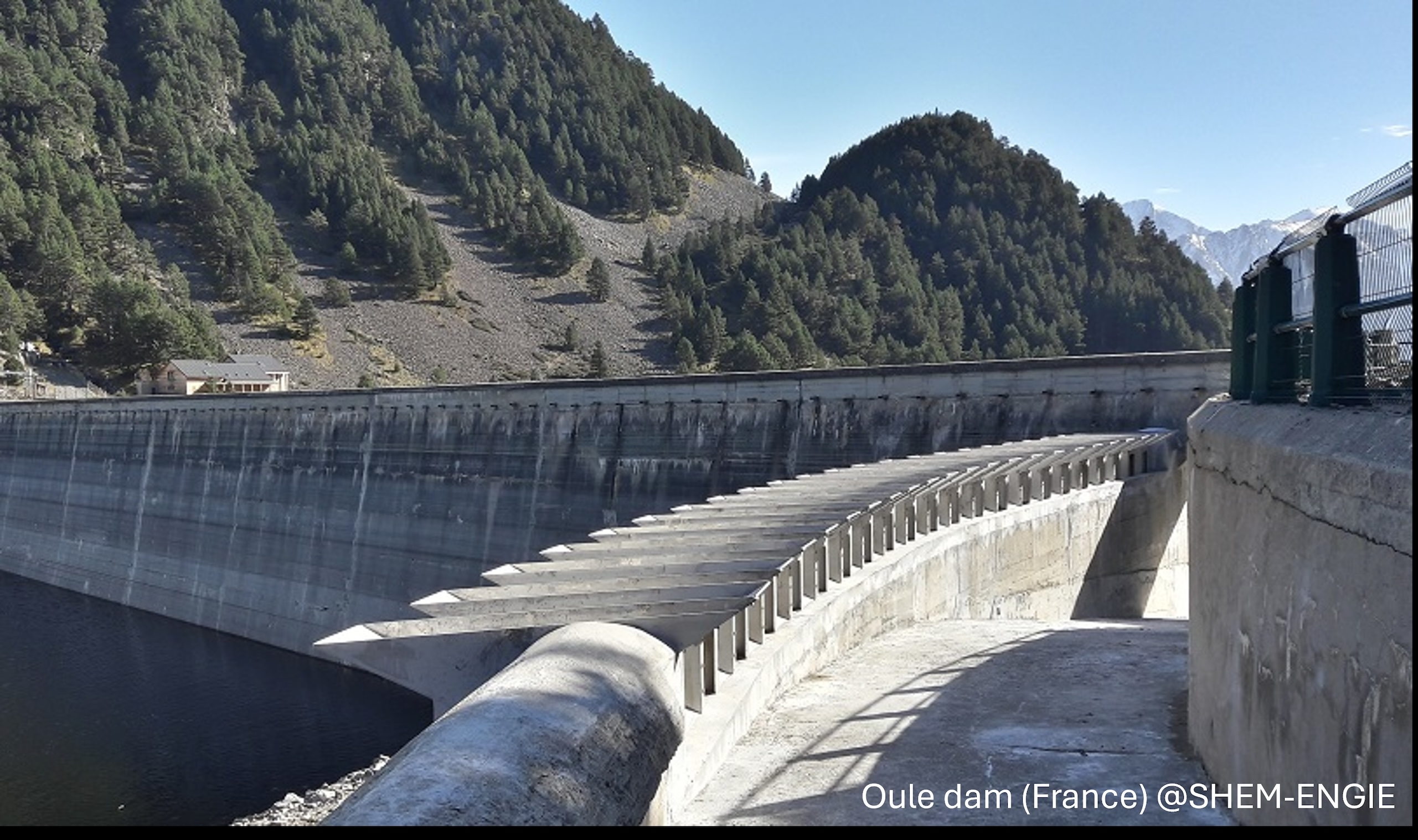Location
Atlanta, GA
Presentation Type
Presentation
Start Date
10-7-2025 11:15 AM
Description
The downstream flow characteristics of piano key weirs (PKWs) are highly complex, manifested by significant localized self-aeration due to nape collisions and plunging jets impacting the downstream free-surface. For PKWs installed in horizontal channels, the interfacial velocity characteristics have received limited attention in previous research. In this experimental study, air-water flow measurements were conducted using a double-tip conductivity probe downstream of a PKW and a reference ogee-crested linear weir to evaluate the velocity trends under comparable hydraulic boundary conditions. The findings reveal the existence of two distinct velocity profiles downstream of piano key weirs: quasi-wall-jet and uniform profiles. The occurrence of these profiles depends on both the longitudinal position relative to the weir crest and the inflow magnitude. At higher discharges, wall-jet profiles dominate near the jet impact zone, transitioning into uniform flow profiles further downstream. Conversely, at lower discharges, uniform velocity distributions persist throughout the aerated region. Notably, these quasi-wall-jet profiles exhibit moderate similarities with hydraulic jump characteristics observed downstream of the linear weir, particularly in the vertical positioning of the maximum velocity, which resides close to the channel bed. Furthermore, evaluation of the longitudinal decay of maximum time-averaged velocities indicates a comparable exponential trend for both weir models. However, the PKW exhibits lower velocity magnitudes due to enhanced energy dissipation mechanism by the plunging jets and nappe interactions, distinguishing them from the hydraulic jump behavior of the linear weir. Overall, these insights contribute to the understanding of PKW hydraulics, particularly on the downstream interfacial velocity properties in horizontal channel applications.
Included in
Interfacial Velocity Characteristics Downstream of a Piano Key Weir Versus a Linear Weir in a Horizontal Channel
Atlanta, GA
The downstream flow characteristics of piano key weirs (PKWs) are highly complex, manifested by significant localized self-aeration due to nape collisions and plunging jets impacting the downstream free-surface. For PKWs installed in horizontal channels, the interfacial velocity characteristics have received limited attention in previous research. In this experimental study, air-water flow measurements were conducted using a double-tip conductivity probe downstream of a PKW and a reference ogee-crested linear weir to evaluate the velocity trends under comparable hydraulic boundary conditions. The findings reveal the existence of two distinct velocity profiles downstream of piano key weirs: quasi-wall-jet and uniform profiles. The occurrence of these profiles depends on both the longitudinal position relative to the weir crest and the inflow magnitude. At higher discharges, wall-jet profiles dominate near the jet impact zone, transitioning into uniform flow profiles further downstream. Conversely, at lower discharges, uniform velocity distributions persist throughout the aerated region. Notably, these quasi-wall-jet profiles exhibit moderate similarities with hydraulic jump characteristics observed downstream of the linear weir, particularly in the vertical positioning of the maximum velocity, which resides close to the channel bed. Furthermore, evaluation of the longitudinal decay of maximum time-averaged velocities indicates a comparable exponential trend for both weir models. However, the PKW exhibits lower velocity magnitudes due to enhanced energy dissipation mechanism by the plunging jets and nappe interactions, distinguishing them from the hydraulic jump behavior of the linear weir. Overall, these insights contribute to the understanding of PKW hydraulics, particularly on the downstream interfacial velocity properties in horizontal channel applications.


